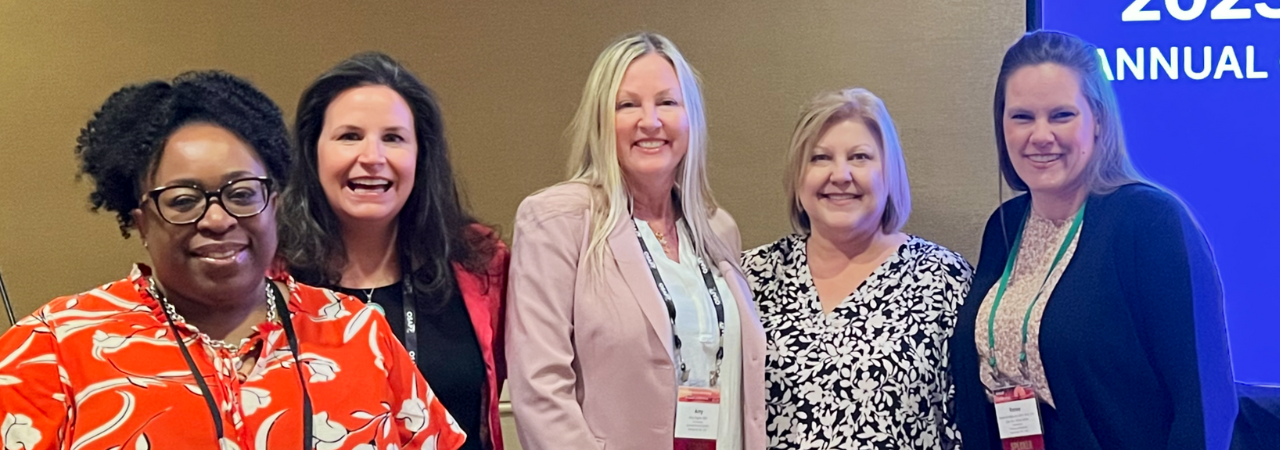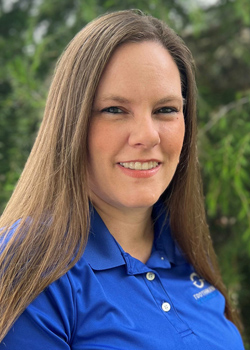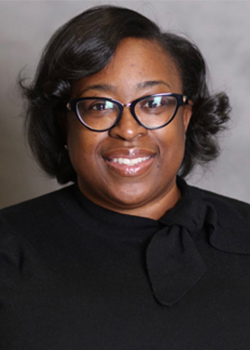The value of infection control education and certification

Above: Pamela Simmons, far left, and Renee McNally, far right, with their co-panelists from “The Value of Certification” session, which was held in June at the 2023 OSAP Annual Conference.
Dental assistants are often considered champions of infection control in their offices, but this doesn’t happen overnight. Keeping patients safe involves more than just wearing gloves and a mask — it requires a commitment to continuous learning and education. That’s one reason why infection control certification has proven valuable for many dental professionals.
Renee McNally, CDA, COA, CPFDA, CRFDA, CDIPC, works as a lead compliance coordinator in an orthodontic office in Maryland and was one of the first dental professionals to earn the Certified in Dental Infection Prevention and Control (CDIPC) certification developed by DANB and the Organization for Safety, Asepsis and Prevention (OSAP).
She says the certification — along with her other credentials — has given her a “leg up” when it comes to her credibility as a compliance coordinator in her dental office.

“COVID, as horrible as it was, really gave dental infection control and people like me a time to shine. I’m thankful that my doctor looked to me as an expert in my field, and we really haven’t looked back since.”
— Renee McNally, CDA, COA, CPFDA, CRFDA, CDIPC
“When I say, ‘This is what we need to do’ or ‘We need to make some changes,’ my team knows it’s not just because I’m rambling on,” she explains. “They see that I know what I’m talking about because I take the time to research and take the continuing education to uphold my certifications.”
Although McNally earned her bachelor’s degree in human biology from Michigan State University, she didn’t always know her path would lead her to infection control. She worked as a Certified Orthodontic Assistant (COA) for several years, but getting an opportunity to work as a compliance specialist sparked a new interest in dental infection control.
When the COVID-19 pandemic hit, there was a heightened need for infection control experts. As the go-to infection control expert in her office, McNally stepped into the role of compliance coordinator, overseeing infection control protocols in her office and training new orthodontic assistants.
“COVID, as horrible as it was, really gave dental infection control and people like me a time to shine,” says McNally. “I’m thankful that my doctor looked to me as an expert in my field, and we really haven’t looked back since.”
Pamela Simmons, CDIPC, has experienced the benefits of earning infection control certification. As the infection control manager at the Boston University School of Dental Medicine for more than 10 years, she has always been driven to learn more and pass on the importance of a safe, sanitary dental environment. But it hasn’t always been easy.
“In an academic dental environment, the focus isn’t always on infection prevention — it’s about getting students through their courses and ultimately to graduation,” explains Simmons.
To help emphasize the importance of infection control to her students and colleagues, Simmons wanted to grow her own knowledge and have credentials behind her name to demonstrate her expertise.
“I didn’t want people to second-guess my decisions,” she says.
When CDIPC certification was introduced in 2022, Simmons was eager to apply. She had discussed earning infection control certification with her boss during prior performance reviews, and this was her chance to achieve that career goal. Earlier this year, she officially passed the exam and became certified.

“As much knowledge as I’ve gained through experience, the certification program actually taught me even more.”
— Pamela Simmons, CDIPC
CDIPC certification expanded Simmons’ knowledge and has helped her communicate more effectively with fellow faculty members, students, and peers in the dental industry.
“As much knowledge as I’ve gained through experience, the certification program actually taught me even more,” explains Simmons.
Now, Simmons and McNally are helping spread valuable infection control knowledge in their day-to-day roles and beyond.
As the lead compliance coordinator in an orthodontic office, McNally is responsible for providing ongoing infection control guidance to the rest of the staff, from the front office staff to the doctor.
“I want employees to know how to keep patients safe when they’re in the chair,” she says. “But I also want them to understand that what they’re doing isn’t just for the patient. It’s also for them, whether it’s knowing how to properly wear a mask or use utility gloves. Infection control doesn’t just end at the dental chair. It extends to all the things we’re touching in the back office and taking to the front. There are just so many moving pieces.”
Simmons regularly communicates infection control information in her role, starting with new student orientation and continuing through sending out additional resources and regular reminders.
“I’m constantly doling out information,” she says. “It’s ongoing communication, ongoing training, dropping seeds of knowledge to everyone willing to hear.”
For example, Simmons recently returned from leave and had to send out a reminder about an infection control issue that arose when she was away.
“Basically, that morning, they knew I was back,” she shares with a laugh.
Both McNally and Simmons served on the panel session “The Value of Certification” at the OSAP Annual Conference in June. There, Simmons stressed the importance of working together and learning from others.
“No one person knows all,” Simmons elaborates. “We all work together. I’m constantly in communication with other dental infection control managers and directors from other schools to share protocols and information. When you [earn] certification, you won’t feel lost when certain topics come up, so I strongly suggest it.”
McNally says being a member of OSAP has also been invaluable, as she can attend conferences and events where she can share information with other members as well as learn from them.
“When I talk to those people and have those resources, I can come back to my office with more information and share it with others I know,” she explains.
Sharing small tips and tidbits of infection control information can make an impact for dental professionals and lead to safer dental visits for patients, says McNally.
“It trickles down,” she shares. “You just have one conversation, and that can turn into many conversations.”

